The total bed increased by 348,000, and the total outpatient volume was restored to the epidemic ... the National Health and Health Commission announced authoritative data
Author:Medical community Time:2022.07.12

Physician's work load is lower than the level of 2019
Today (July 12), the National Health and Health Commission announced the "Statistics of the Development of my country in 2021" (hereinafter referred to as the "Bulletin"). It can be inferred from the data that in 2021, the impact of the epidemic on the national medical and health institutions is still there, but it has shown a trend.

The growth rate of beds has increased for the first time in 5 years,
The total number of health personnel has slowed down for 3 consecutive years
At the end of 2021, a total of 9.448 million beds in medical and health institutions in the country. Among them, the hospital was 7.413 million (78.5%) and 1.712 million (18.1%) of grass -roots medical institutions. In the hospital, 70.2%of the public hospitals, and 29.8%of the beds in private hospitals.
Compared with 2020, the bed increased by 348,000. Among them, the hospital beds increased by 281,000 (an increase of 116,000 in public hospitals, an increase of 166,000 private hospitals), and a grassroots medical and health institution bed increased by 63,000. 6.70 in 2021.
"Medical Tank" found that in the five years from 2017-2021, the number of beds in bed in the country for the first time in 2021 has increased in the growth rate of the number of beds in the national medical and health institutions. From the figure below, it is clear that the annual year -on -year growth rate is declining for 5 years, and only 0.5%higher than 2020 in 2021.
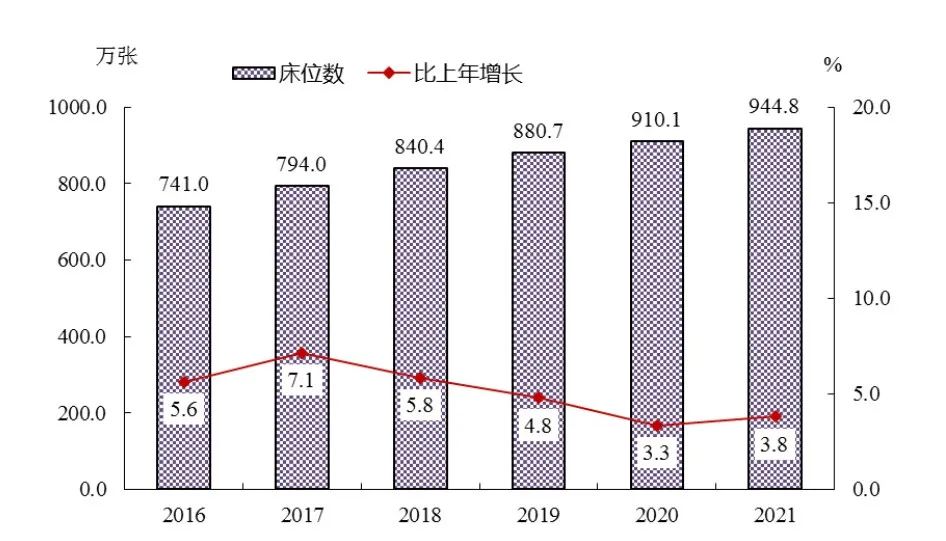
The number of beds and growth rate of national medical institutions
At the same time, by the end of 2021, the total number of national health personnel reached 13.983 million, an increase of 508,000 (an increase of 3.8%) over the previous year. However, this growth rate has slowed for three consecutive years -the total number of national health personnel in 2020 increased by 4.2%year -on -year, and in 2019, it increased by 5.1%year -on -year.
By 2021, my country already has 11.242 million sanitary technicians (5.3%year -on -year), of which 4.287 million doctors (assistant) doctors (assistant) doctors (assistant) and 5.18 million registered nurses. There are 3.04 physicians per 1,000 population (assistant) physicians, and 356 registered nurses per 1,000 population; 308 people per 10,000 population, 6.79 people per 10,000 public health institutions per 10,000 population, increased from 2020, increased from 2020 Essence
Number of national health personnel
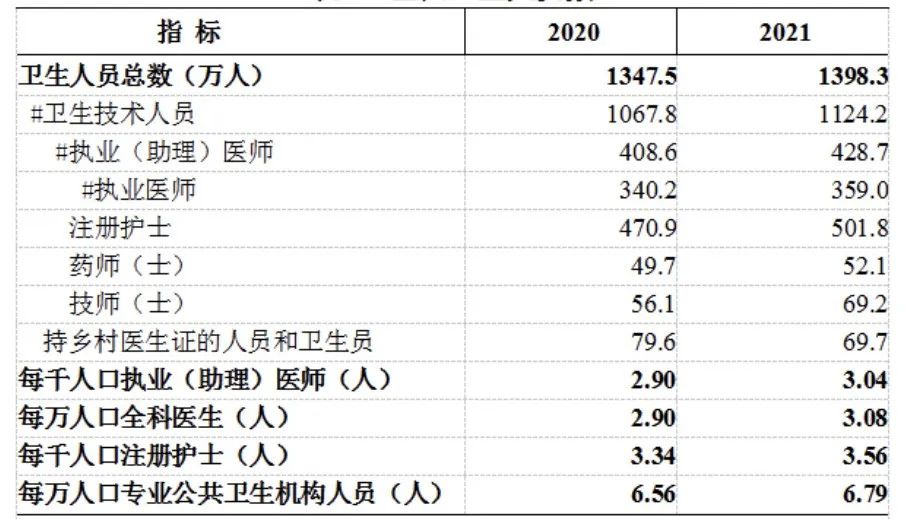
The outpatient volume and hospitalization volume gradually recovered,
Physician's work load is lower than the level of 2019
In 2021, the total number of medical and health institutions across the country was 8.47 billion, an increase of 730 million (increase 9.4%) from the previous year, and residents had an average of 6.0 visits to medical and health institutions. The number of admission in the national medical and health institutions reached 247.26 million, an increase of 17.13 million (increased by 7.4%) over the previous year, and the annual hospitalization rate of residents was 17.5%.
Compared with previous years, the total number of outpatient diagnosis has basically restored the level before the epidemic, and the total hospitalization volume is basically the same as the situation in 2017. Although the workload of hospital doctors in 2021 is higher than in 2020, it is lower than the level in 2019.
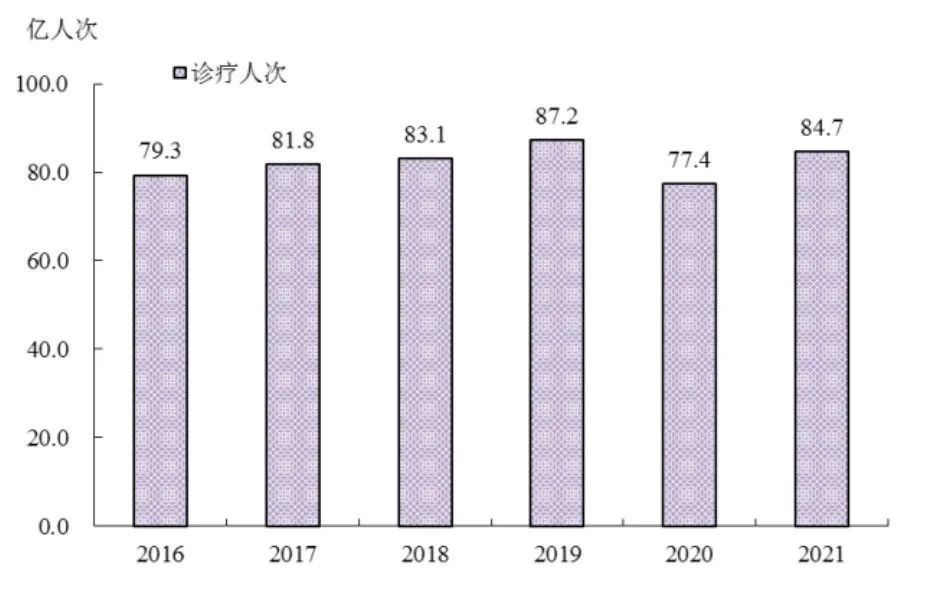
The diagnosis and treatment of national medical and health institutions
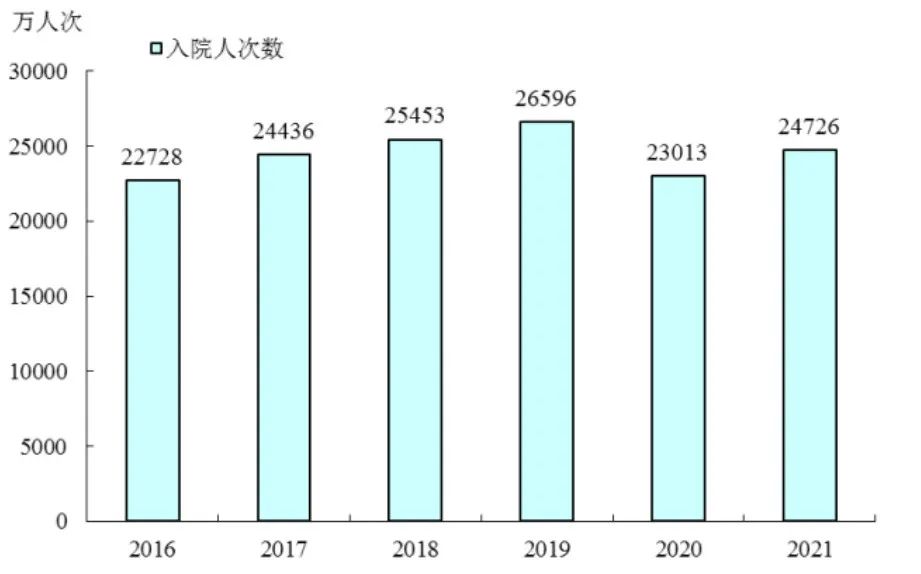
National medical and health institutions hospitalized
In 2021, the average doctor of the hospital was 6.5 diagnosis and treatment, and the hospitalization of 2.2 beds was daily. Among them, the average daily diagnosis and treatment of doctors in public hospitals and 2.2 beds were hospitalized. In 2020, hospital doctors averaged 5.9 diagnosis and treatment and inpatient 2.1 beds.
However, in 2019, hospital doctors have averaged 7.1 diagnosis and treatment and inpatient 2.5 beds.
This is also in line with data changes that are in line with the use rate of bed: from 2019 to 2021, the use of beds in hospitals across the country is 83.6%, 72.5%, and 74.6%, of which the use rate of beds in public hospitals is 91.2%, 77.2%, and 77.2%, and 77.2%, and 77.2%, and 77.2%, and 77.2%, and 77.2%, and 77.2%, and 77.2%, and 77.2%, and 77.2%, and 77.2%, and 77.2%, and 77.2%, and 77.2%, and 77.2%, and 77.2%, and 77.2%, and 77.2%, and 77.2%, and 77.2%. 80.3%.
The average hospitalization date has not changed much: From 2019 to 2021, the average hospital discharge of hospital discharge is 9.1, 8.5, and 9.2, respectively. Among them Essence
Grassroots medical and health institutions have increased significantly,
Disease Control Center and Maternal and Child Health Institutions Decrease
The Gazette shows that by the end of 2021, the total number of national medical and health institutions will reach 10,30935, an increase of 8013 over the previous year. Among them: 36570 hospitals, 9,77790 grass -roots medical and health institutions, and 13,276 professional public health institutions. Compared with 2020, the hospital increased by 1176, and the grassroots medical institutions increased by 7754.
According to the "Bulletin" in 2020, compared with 2019, the hospital increased by 1040, and the grass -roots medical and health institutions increased by 1,5646. It can be seen that from 2019 to 2021, grass -roots medical and health institutions have increased significantly.
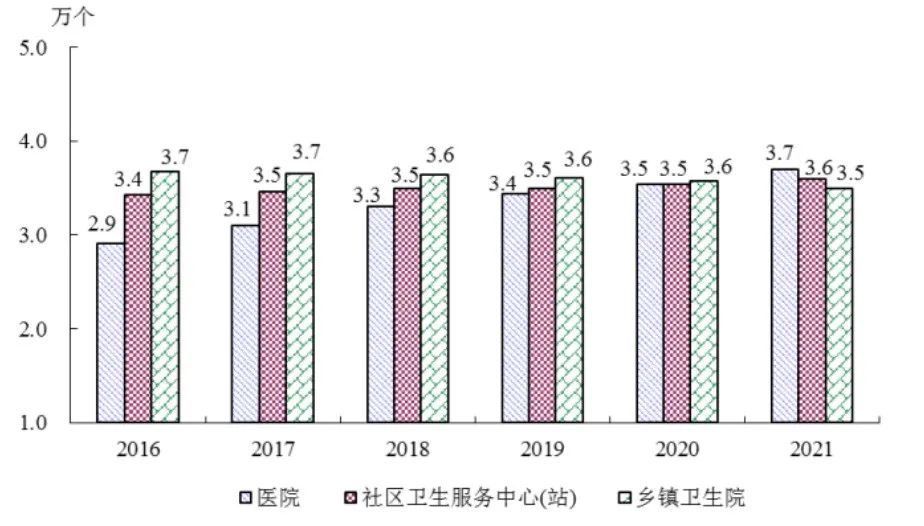
Number of Numerous Hospital, Community Health Service Center (station), township health centers
Among them, the township health centers and village clinics are decreasing, and the number of community health service centers (stations), clinics and medical rooms are increasing. At the same time, public hospitals are decreasing, the number of private private hospitals is increasing.
By the end of 2021, there were 1,1804 public hospitals, 24,766 private hospitals, 36,160 community health service centers (stations), 34,943 township health centers, 27,1056 clinics and medical rooms, and 59,9292 village alanis. 3376 disease prevention and control centers, 3010 health supervision institutions, and 3032 maternal and child health care institutions. By the end of 2020, there were 1,1870 public hospitals, 2,3524 private hospitals, 35,365 community health service centers (stations), 35,762 township health centers, 25,9833 clinics and medical rooms, and 60,8828 village a bathrooms. 3384 disease prevention and control centers, 2,934 health supervision institutions, and 3052 maternal and child health care institutions.
Compared to 2018,
The total health expenses of the country increased by nearly 2 trillion yuan
The total per capita health costs in 2021 were 5348.1 yuan, and the initial calculation of the national total health expenses was 7559.36 billion yuan, accounting for 6.5%of the GDP.
Among them, government hygiene expenditure refers to the financial allocation of governments at all levels for health. In 2018, it was 1639.07 billion yuan, accounting for 28.3%of the total health costs of the year; in 2019, it was 1742.85 billion yuan, accounting for 26.7%of the total health costs of the year; In 2020, it was 2199.83 billion yuan, accounting for 30.4%of the total health costs of the year; 2021 was 2071.85 billion yuan, accounting for 27.4%of the total health costs of the year.
Personal hygiene expenditure is a direct cash payment for urban and rural residents when receiving various medical and health services. In 2018, it was 1666.29 billion yuan, accounting for 28.7%of the total health costs of the year; in 2019, it was 1848.95 billion yuan, accounting for 28.4 of the total health expenses of the year. %; 2020 was 2005.53 billion yuan, accounting for 27.7%of the total health costs of the year; 2021 was 2095.48 billion yuan, accounting for 27.7%of the total health costs of the year.
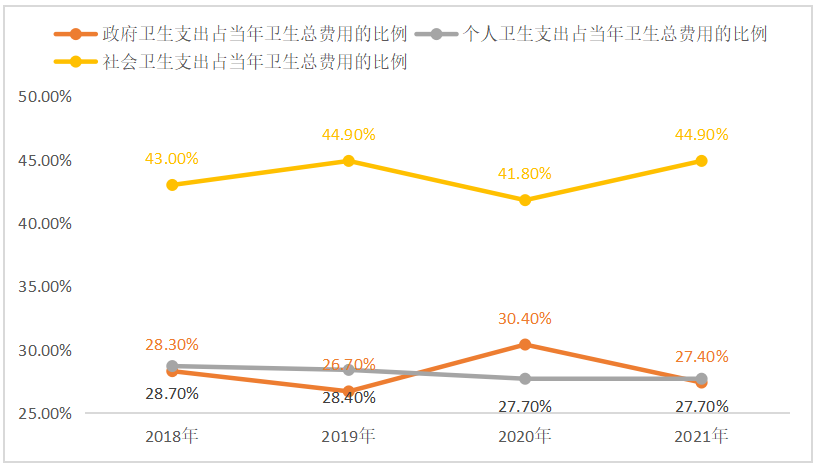
Social health expenditure refers to the investment in the capital of all sectors outside the government, including social medical security expenditure and social donation assistance. In 2018, it was 2494.47 billion yuan, accounting for 43.0%of the total health costs of the year; in 2019, 2927.80 billion yuan, accounting for 44.9%of the total health costs of the year; in 2020, 3025.28 billion yuan, accounting for 41.8%of the total health costs of the year; 2021 It was 339.203 billion yuan, accounting for 44.9%of the total health costs of the year.
It is worth pointing out that compared with 5799.83 billion yuan in 2018, the national total health expenses in 2021 increased by 1759.53 billion yuan (about 23.28%), which was an increase of nearly 2 trillion yuan in 4 years. However, the proportion of government health expenditures in the country's total health expenses did not increase significantly.
Source: medical tank in the medical world
Responsible editor: Zheng Huaju
School pair: Zang Hengjia
- END -
Expedition!Will carry out 1-3 years volunteer service ...

July 20,Anhui Province 2022 college studentsVolunteer service volunteer volunteers...
2022 Forbes China City Consumer Development Forum will be held on July 23
Video/Snapshot, T_100, F_JPG, M_fast Controls = Controls data-version/ueditor/video/mp4/20220718/1658109320160356.mp4 transcoding = 1 style = width: 400px; 2022 Forbes China City Consu